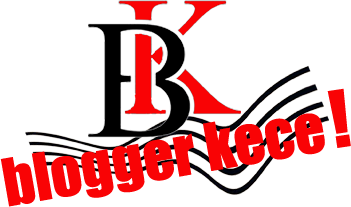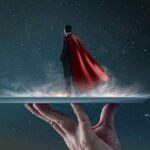In a world dominated by rapid technological advancement and boundless access to information, there emerges a concept that challenges the boundaries of conventional thought — a fusion of the ethereal and the tangible, the dream and the deed. This concept is called Imacion — the superpower that arises when imagination and creation merge into a singular force capable of reshaping reality.
But Imacion isn’t just a poetic construct or the theme of a sci-fi novel. It is a lived experience for artists, inventors, entrepreneurs, scientists, and dreamers alike. It is the mental engine behind every innovative product, awe-inspiring piece of art, scientific breakthrough, and cultural revolution. In essence, Imacion is the internal alchemy that turns thought into form, potential into progress, and dreams into deeds.
This article explores Imacion not just as an abstract notion but as a practical, powerful force — a superpower innate to all human beings. We’ll explore its roots, its role in history, how it works in modern life, and how anyone can cultivate and harness it to revolutionize their personal and professional worlds.
1. The Birth of a Concept: What is Imacion?
The term Imacion is a portmanteau of imagination and creation, symbolizing the synthesis of two faculties that are too often regarded as separate. Where imagination is traditionally seen as the realm of dreamers, fiction, and fantasy, creation is often considered the realm of builders, pragmatists, and real-world makers.
However, this division is false — or at least, incomplete.
Every act of creation begins with an act of imagination. A skyscraper first takes shape in a sketchpad. A novel begins as an image or a voice in the mind. A new medical treatment starts as a hypothesis, often imagined before proven. The iPhone began in the mind of Steve Jobs. The theory of relativity started in Einstein’s thought experiments. Imagination isn’t fluff; it’s the beginning of all things.
Imacion, therefore, is the intentional activation of both faculties: the visionary lens of imagination and the productive hand of creation. It is when dreaming and doing become a single act.
2. The Dual Engines of Human Progress
To understand Imacion, we must appreciate its components.
Imagination: The Seed of Possibility
Imagination is our ability to visualize what is not present, to conceive of what does not yet exist. It is our mind’s virtual reality engine — simulating outcomes, building worlds, predicting possibilities. Neuroscientists link imagination to the brain’s default mode network (DMN), which activates during daydreaming, future planning, and creative ideation.
From early childhood, we are natural imaginer-creators — we turn boxes into spaceships and crayons into universes. Yet, society often suppresses imagination in favor of “realistic” thinking as we grow. But imagination, when preserved and exercised, becomes the launchpad of innovation.
Creation: The Power of Manifestation
Creation, on the other hand, is the act of bringing something into existence. It takes the raw material of ideas and turns them into tangible outcomes: a product, a performance, a process, or a paradigm.
While imagination is limitless, creation is bounded by resources, skills, and circumstances. It is this limitation that often causes tension — and where Imacion shines.
When properly balanced, imagination inspires boundless possibility while creation imposes useful constraints that lead to refinement and realization.
3. Historical Imacionists: The People Who Changed the World
Throughout history, the greatest minds have all been Imacionists, whether or not they called themselves such.
Leonardo da Vinci
A master artist and engineer, da Vinci imagined flying machines and sketched anatomical diagrams centuries before aviation or modern medicine. His mind moved fluidly between the imagined and the real.
Nikola Tesla
Tesla imagined wireless power transmission and radio communication long before the infrastructure existed to make them viable. His imaginative visions eventually found form in real-world technologies.
Marie Curie
Curie’s breakthroughs in radioactivity came not just from careful experimentation but from the imaginative leap to hypothesize unseen forces.
Walt Disney
Disney envisioned a world where imagination could become a lived experience. Disneyland was not merely a theme park — it was an embodiment of his inner world.
These figures did not merely dream; they translated imagination into engineered marvels. That is the hallmark of Imacion.
4. Imacion in the 21st Century: The Superpower of Innovation
In today’s world, Imacion is not just useful — it is essential. Automation and AI can replicate routine skills, but human imagination and creative synthesis remain irreplaceable.
Technology and Imacion
-
Elon Musk, for example, imagines interplanetary colonization, then directs the creation of reusable rockets.
-
Steve Jobs imagined the future of computing in his mind and pushed his teams to manifest it in iconic designs.
Technological innovation now depends more than ever on Imacion — the ability to visualize what the world could be and then build the tools to make it so.
Art and Culture
In the arts, Imacion is the life-force of cultural evolution. Consider how:
-
Filmmakers like Christopher Nolan manipulate time and consciousness in storytelling, blending visual imagination with meticulous execution.
-
Writers like Octavia Butler imagined alternate futures that challenged social norms and sparked new dialogues in culture.
In both art and science, the pattern repeats: imagination starts the fire; creation makes it burn.
5. The Psychology of Imacion: How the Brain Bridges Dream and Deed
Imacion isn’t just poetic — it’s neurological.
Neuroscience of Imagination
Functional MRI studies show that imagining an action and performing it activate similar brain regions, particularly the motor cortex. This is the basis of visualization techniques used by athletes, musicians, and performers. The mind rehearses before the body acts.
Cognitive Creation
Creation, meanwhile, activates the brain’s executive networks — planning, decision-making, and motor coordination. The “flow state,” described by psychologist Mihaly Csikszentmihalyi, is the mental zone where imagination and action unify.
Imacion, then, is a neurological bridge — a cognitive relay between ideation and execution, fueled by intrinsic motivation and curiosity.
6. The Barriers to Imacion — and How to Overcome Them
Despite being natural Imacionists as children, many people grow up to become either overly pragmatic or endlessly idealistic. Both extremes cripple Imacion.
Common Barriers:
-
Fear of Failure: Many suppress imaginative ideas because they’re afraid they won’t work. Yet failure is often a necessary step in the creative process.
-
Overthinking: Perfectionism and over-analysis can paralyze creation.
-
Imposter Syndrome: People doubt their right to create or the worthiness of their ideas.
-
Disconnection from Play: Adults who lose their sense of playfulness struggle to engage their imaginative faculties.
How to Cultivate Imacion:
-
Reignite Play: Practice creative activities with no agenda — doodling, brainstorming, writing fiction.
-
Prototype Quickly: Don’t wait for perfection. Build quick mockups, sketches, or MVPs (Minimum Viable Products).
-
Visualize Outcomes: Use mental rehearsal techniques to simulate success.
-
Collaborate Across Disciplines: Great Imacion happens at the intersection of diverse knowledge fields.
-
Balance Dreaming and Doing: Set aside time for both ideation and execution, recognizing their equal importance.
7. Imacion and the Future of Humanity
The most pressing challenges of our time — climate change, poverty, inequality, technological ethics — cannot be solved by systems thinking alone. They require bold reimagining of what society, economy, and civilization can be.
Design Thinking and Imacion
The principles of design thinking — empathy, ideation, prototyping, testing — are real-world applications of Imacion. They treat creativity not as a gift but as a method. Companies like IDEO, Apple, and Google institutionalize Imacion through these methods.
Education and Imacion
Traditional education rewards rote memorization and linear thinking. But the future belongs to those who can think divergently and synthesize across disciplines. Schools should teach Imacion as a skillset — combining storytelling, systems thinking, coding, and making.
AI and the Human Edge
As AI becomes more proficient at analysis and replication, our uniquely human edge lies in imagination-led creation — in intuitive leaps, emotional resonance, and embodied experience. Imacion is our enduring advantage in an increasingly automated world.
8. Imacion in Personal Life: Creating a Meaningful Reality
On a personal level, Imacion is the key to crafting a life aligned with your values and visions. Every career pivot, startup, novel, or reinvention starts with the internal whisper: What if…?
Ask yourself:
-
What do I wish existed?
-
What could I create to bring it into the world?
Whether you’re an entrepreneur building a product, a teacher designing curriculum, or a parent inventing games with your child — you are engaging in Imacion.
The Daily Practice of Imacion:
-
Morning Pages or Journaling: Dump raw thoughts and ideas without editing.
-
Sketch or Mind Map: Visualize your thoughts and future goals.
-
Mini Projects: Set weekly challenges to create something — a poem, a recipe, a prototype.
-
Reflect: End the day by noting what you imagined and what you made.
Make Imacion a habit, not a high ideal.
9. Conclusion: Imacion as a Way of Being
Imacion is not just a cognitive function. It is a worldview. It says:
“The world is not just what is. It is what could be — and I have the power to shape it.”
In a world filled with complexity and chaos, Imacion is a form of quiet rebellion — a refusal to accept things as they are. It is a call to dream boldly and act bravely.
We are all born Imacionists. And the most transformative individuals, organizations, and movements are those that continue to dream and create, again and again.






